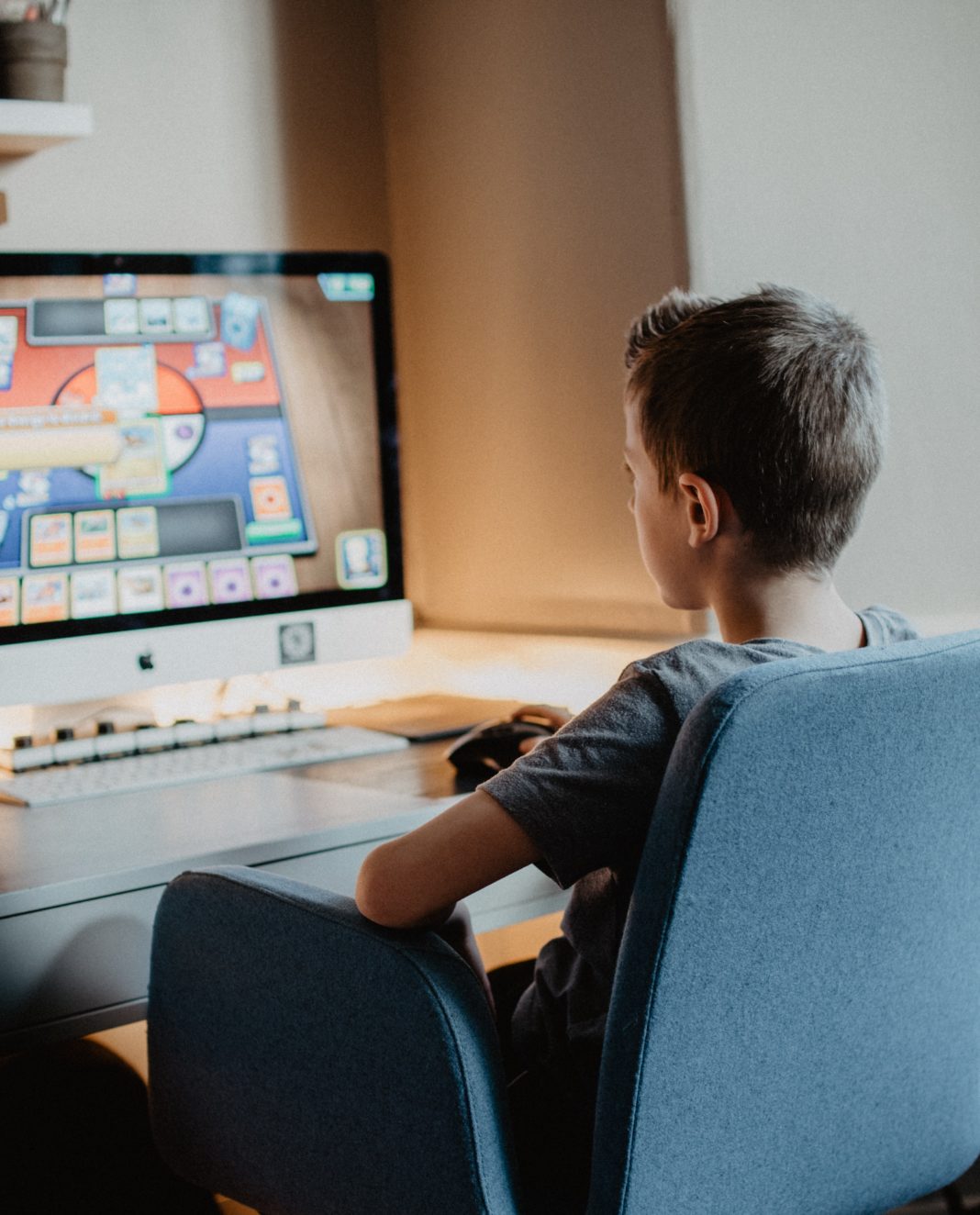Editor's Note: This piece is written collectively by the staff of the Quaglia Institute and the Australian Institute for Voice and Aspirations under the guidance of Russ Quaglia. Quaglia is the coauthor of the ASCD book The Power of Voice in Schools.
For most of us, teaching and learning are suddenly and profoundly different. What has not changed, however, is the very soul of who we are as educators and the importance of student voice.
Like so many of you, we have spent the last few weeks scrambling to stock up on supplies, adjust to shelter-in-place policies, and learn how to utilize various online platforms for virtual meetings. All the while we’re supporting our own children with their adjustment to online learning and sudden isolation from their friends (and trying not to lose our own minds).
What became clear through all of this is that student voice is more important than ever. When students have a voice in their learning, they are five times more likely to be engaged. Particularly in the absence of in-person interactions, we must do everything we can to ensure that the voices of students are not lost in online learning. The messages we send to students during this time will tell them a great deal about how we value them as individuals and how we value learning.
While online learning may be a new concept for some, it is not a new approach to education. The difference is that before the pandemic, online learning was a choice. Now it is a necessity. While there are endless pieces of advice out there (yes, online…) regarding how to best approach online learning, we offer a different perspective, viewing it through the lens of fostering student voice.
There are some realities that must be acknowledged: time has been lost, lessons will not be the same, and the current global situation comes with mountains of challenges. While there are many aspects that we cannot control, it is important to carefully choose how we respond. We are choosing to view this current challenge through a lens of possibility, rather than becoming immobilized admiring our problems.
While everything feels different these days, student voice remains as important as ever. We would like to share ten pieces of advice on how to infuse student voice into online learning, give students some control during this chaotic and seemingly uncontrollable time, and keep students meaningfully engaged:
1. Be Creative in the Box
We have long heard the phrase, “think outside the box.” The notion is spot-on at this time — think outside the box as much as you’d like! Our current situation requires it. But remember to bring that thinking back into your box and put it into action.
Literally make your box interesting. When you watch newscasters virtually from their homes, are you curious about what you see in the background? Does a creative piece of art, the items on a bookshelf, or the awards displayed on the wall catch your eye? Remember that your students look at your background, too! Rather than portraying your broadcasting “box” as generic or dreary, embrace the creative opportunity. Let your students see a glimpse of your personal side. Challenge students to rethink their own boxes. Encourage them to share their voices by creating a personalized background that provides a glimpse into what is important to them and what they deem worthy of sharing. We are living in very tight boxes right now, and we must be imaginative within those parameters.
2. Don’t Hide
Accept that the camera adds ten pounds and stop worrying about being red carpet ready! Neither of those matter. During this time of uncertainty, your students just want to see YOU … the real you that they recognize as a source of stability and normalcy.
Periodically record messages of encouragement to your students and their families. Include a personal picture in your online lessons and templates. When students download a worksheet, let them be surprised by a picture of your dog, your lunch, or something that makes them laugh and connect with you. Encourage students to submit their assignments with the same personal touch. This lets them know you see and value them as individuals, even from the other side of a computer screen.
3. Grow Bigger Ears
Not literally, of course, but figuratively this could not be more important. This may be the most critical time in our careers to ensure we are good listeners. Be very purposeful—allow students to regularly give you feedback, not just about what they are learning, but regarding the clarity of a lesson, what they may be struggling with, and what they found helpful. Invite them to offer ideas for trying something new. Model that we are all learning and growing as a new community of online learners.
Feedback should not be optional, but rather a required expectation. Amidst the push to cover mountains of content, commit to providing ample time for students to share their ideas, ask questions, and offer you and one another feedback as they learn. And remember that feedback can be fun! Play a song to start a lesson and let students rate your musical selection. Ask the class to rate your outfit (as long as you can rate theirs!). Any type of feedback is an opportunity to connect with your students, hear their voices, and let them know you are learning from them.
4. Embrace the Unknown!
Even in the most well-organized classroom, learning is rarely neat, easy, or even linear. Rather than fearing the uncertainty that comes with shifting instruction online, seize the opportunity to be vulnerable with your students.
If you are struggling to master various online applications, ask a student for assistance. Take it a step further and invite your students to be the teacher. Let them teach you and their classmates something new that can enhance online learning. And keep in mind that the computer is not the only vehicle for learning. Challenge students to be creative: build something with random items in the house (empty toilet paper rolls!), bake using a new recipe or create a novel one, paint a picture, or grow and nurture a plant. The possibilities are endless, as long as you are willing to adventure into the unknown with your students.
5. Become a Yoda
In a live setting, teachers can re-teach, re-direct or re-evaluate a lesson based on students’ reactions. Online platforms are inherently more challenging for teachers to immediately gauge feedback. You can’t easily see if students are checking their cell phones instead of listening. You can’t readily know if a student is looking intently at the screen engaged in the lesson, or actually playing a video game! You are going to have to channel your inner Yoda at a whole new level and “see” what students are doing.
To do this, you may need to heed one of Yoda’s famous lines, "You must unlearn what you have learned." As creatures of habit, we tend to love our routines and our go-to methods. But sometimes we have to shake up—even unlearn—our familiar processes in order to succeed. Embrace online learning, work to break your dependency on past processes, and try to predict the unpredictable. And may the Force be with you!
6. Keep it Real
While we may dream of students who wake up bright and early, excited to jump on the computer for a day of online learning, we are not delusional. We are aware that many students would much rather be watching Netflix, Disney+, Hulu, or even reruns of sporting events.
Keep it real and meet students where they are. Challenge students to connect what they are watching with what they are currently learning. Have students write a character profile of a person from their favorite show, compare and contrast different movies, or create math story problems related to something they recently watched. The key is to connect with students about what they are watching, encourage them to make healthy choices, and link learning to what currently captures their interest.
7. It’s Okay to Smile
COVID-19 is obviously a serious reality for everyone. However, that does not mean we can’t smile, laugh, and find joy during these challenging times.
Many students are experiencing mental and physical health challenges, economic hardship, and an overwhelming sense of uncertainty. In the
midst of this, it is important to create online opportunities for your students
to smile and laugh without feeling guilty. Life and learning must remain
joyful. As a matter of fact, there may be no greater time to make learning fun. Don’t be afraid to share a silly moment or a little humor with your students.
Consider having students create memes related to current events, share a joke of the day, or hold a virtual spirit week. There is no time like the present to establish a pajama day, create a dress like a hero lesson, or declare crazy hair day. All are achievable online!
8. “Won’t You Be My Neighbor?”
Mr. Rogers once shared the following: “When I was a boy and I would see scary things in the news, my mother would say to me, ‘Look for the helpers. You will always find people who are helping.’”
During this pandemic, which is quite scary to children and adults alike, teach your students to look for the helpers. During a time when it can be tempting to hoard supplies and have tunnel vision about our own well-being, we must look outward with a sense of kindness and generosity.
Challenge your students to be helpers during this difficult time—both
to their classmates and others. Online learning provides a ready-made format
for students to collaborate and support each other. Whether providing feedback to one other or posting a how-to video, students have opportunities to use their voices and take responsibility for supporting the learning of their
peers.
Encourage students of all ages to help out around the house, join the family in preparing meals, play with younger siblings, write notes of thanks to health care workers, tend to an elderly neighbor’s lawn, and share supplies with those in need. Ask students their ideas for how to help others during this global crisis.
9. Unmask the Hidden Heroes
There are countless notable heroes out there, including medical professionals, grocery clerks, cooks, and of course educators. There is also another group
of heroes that we need to unmask: parents! Whether they were ready for it or
not, parents are now intimately involved in the teaching process. They are
classroom managers, tutors, cafeteria workers, nurses, and counselors all at once. Parents and caregivers are caring for, feeding, and supporting their children like never before.
Even as career educators, our learning curve is steep as we sit at the kitchen table with our own children, attempting to keep up with our jobs and support the online learning activities of multiple kids at different grade levels. Parents are juggling multiple facets of life in a brand new landscape, and most are not suddenly able to dedicate full time attention to homeschooling their children. And we must remember that there are different variables in every home situation.
With all of this considered, we can and should engage parents, and we should do our best to make it manageable. Provide an easy lesson for parents to support their children. Have your students take the initiative to use their voices and embed sharing with parents into class assignments.
10. Don’t Forget About You!
It is not only important to establish support for your students, but to recognize the needs of adults in your schools, including you! Educators must stay
socially connected while being physically distanced from one another.
Reach out to your colleagues, create opportunities to continue collaborating, and let all the adults in your school community know you care about their health and well-being. Take all possible precautions to stay healthy, make time to get some fresh air, and stay well connected to those you care about. Your health and safety are important—not only to your students, but to those who love you. The healthier you are, the more equipped you will be to navigate through this pandemic, both personally and professionally.
The world around us has changed dramatically in a short amount of time, but the commitment of educators is steadfast. In this changing landscape, you may need to rethink how to be creative, reconsider how to engage students, and be even more cognizant of the social and personal well-being of your students. But adapting to support students is not a new concept for educators; it has always been at the core of our souls. As we find ourselves navigating this brand new terrain, we commend our colleagues around the world for becoming stronger rather than giving up. We admire you for being driven not by fear, but by purpose. Please know that your students, and their parents, know you are making a difference every day. Stay proud, stay strong, and stay connected.
The Quaglia Institute, in association with the Australian Institute for Voice and Aspirations, has created a 30-minute webinar about the content above. It is available free of charge at bit.ly/SVAOnline.








